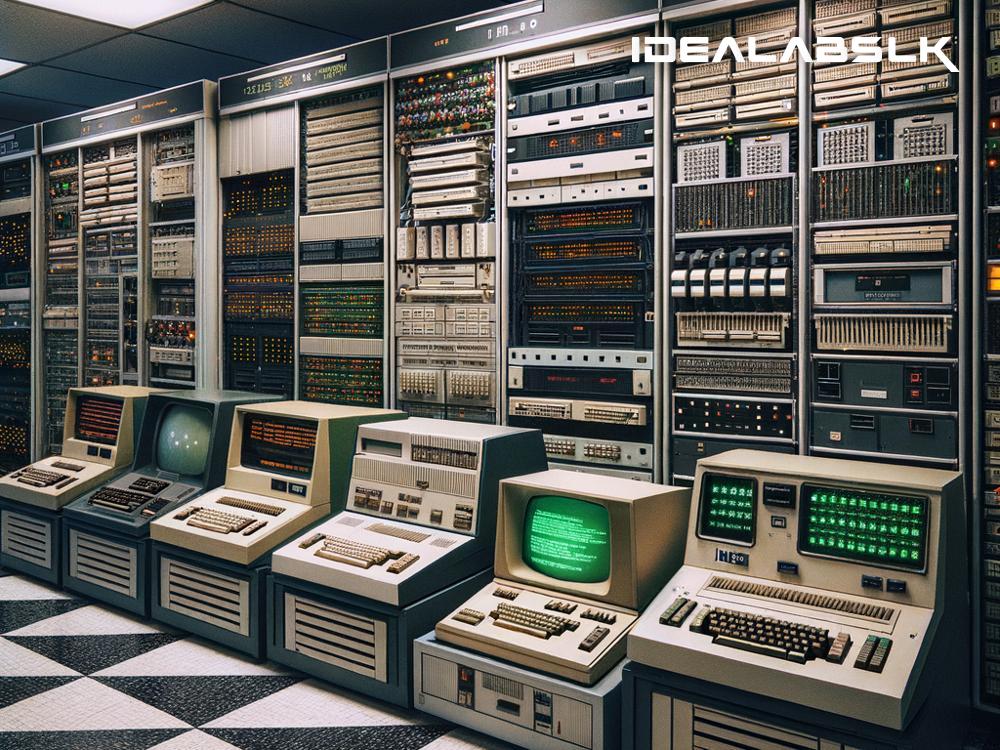IBM, or International Business Machines Corporation, is akin to a towering giant in the field of technology. Today, we talk about the latest AI trends, cloud computing, and quantum computing like they are the bread and butter of tech conversations. But to understand the advancements of the present, it's crucial to take a stroll down memory lane and appreciate the foundations laid by pioneers such as IBM in the realm of data processing. This journey explores how IBM became synonymous with shaping early data processing, marking its territory as an indomitable force in the technology sector.
In the nascent stages of the 20th century, when the term 'data processing' was barely a murmur in the technological landscape, IBM was already laying down the tracks for the future of computing. Initially called the Computing-Tabulating-Recording Company (CTR), IBM didn’t start with grand dreams of digital revolution. Instead, it was formed through the merger of four companies, dealing in scales, time recorders, and tabulators that were mechanical, not digital. These tabulators were designed for specific tasks such as calculation and sorting of information, primarily for census and accounting purposes.
Those early tabulators were IBM's initial foray into data processing. It's fascinating to think about these machines that were essentially giant mechanical calculators. Through punch cards, a technology IBM inherited and improved upon from its predecessors, the company started to evolve. These punch cards could store information, and when fed into a machine, allowed for the automated counting or tabulating of data. Imagine moving from manually counting census data for months or even years, to machines that could do the same work in a fraction of the time. This shift not only revolutionized how data was processed but also significantly reduced human errors and the time taken to process large sets of information.
By the 1940s, IBM had taken another monumental step with the introduction of the Harvard Mark I, also known as the IBM Automatic Sequence Controlled Calculator. This was a significant leap from mechanical to electromechanical computing. The Mark I could automatically carry out long computations that were previously unthinkable. This behemoth of a machine, with its relay-based processing and punch-card input, was among the earliest examples of digital computing devices, setting the stage for modern computing.
Then came the punch card's swan song and the dawn of digital storage in the 1950s and 1960s. IBM transitioned from electromechanical tabulators to electronic computers, which marked the beginning of a new era in data processing. The IBM 650 and later the IBM 700 series were among the first computers to make electronic data processing a widespread reality. These machines could perform complex calculations and process data at unprecedented speeds. The IBM 360, introduced in the 1960s, was a game-changer. It was a system that could perform a variety of tasks, from simple calculations to complex data processing, making it extremely versatile and universally applicable across different industries.
IBM's contributions were not just limited to hardware. The development of programming languages, such as FORTRAN (short for "Formula Translation"), was pivotal. FORTRAN allowed scientists and engineers to write codes that computers could understand, simplifying the programming process and making it more accessible. In essence, IBM wasn’t just changing the way data was processed; it was transforming how humans interacted with machines.
In reflecting on IBM's monumental role in shaping the early landscape of data processing, it's about more than just the innovation of faster, more efficient machines. It's about the realization of a vision where technology could empower businesses, governments, and society at large to operate more effectively. IBM's early contributions laid the foundational principles of computing, storage, and data processing that we often take for granted today.
In conclusion, the impact of IBM on early data processing and the broader technology landscape cannot be overstated. From mechanical tabulators to the era of digital computing, IBM has been at the forefront, pioneering developments that have propelled us into the modern age of information. It nurtured the seeds of innovation that sprouted into the digital revolution we are experiencing today. As we look toward the future, teeming with possibilities of artificial intelligence, quantum computing, and beyond, it's essential to remember the roots and appreciate the giants upon whose shoulders we stand—IBM being one of the most formidable among them.

